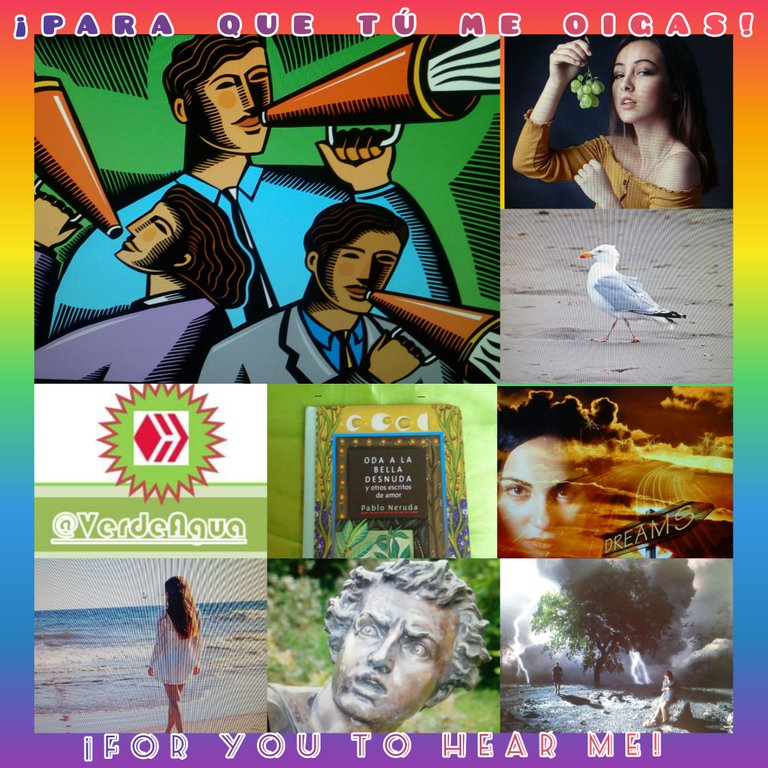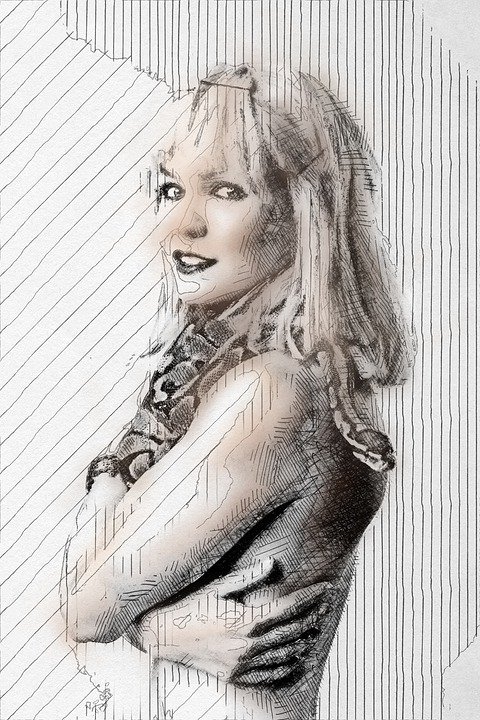

 ,
,

El escribir ha incrementado mi niño interior con preguntas, interpretación y reinterpretación de estos hermosos poemas. Lo que me conlleva a indagar y escrudiñar sobre lo que escribo y reflexiono. Por tanto, hoy martes le mencionare que el hombre de letras en el cual me apoye, y que el sin saberlo me estímulo a mirar éste poema de manera más profunda, les hablo del catedrático Luis Quintana Tejera.

Éste investigador y catedrático escribió con una riqueza de interpretación sobre Miguel Cervantes, Dante Alighieri, Neruda… y necesito decir que su obra: “El infinito olvido en la poética nerudiana del amor” consiste en un análisis sobre cada uno de los *veinte poemas de amor y una canción desesperada*. Y el poema 5 de la obra de Nerudiana, se llama: *PARA QUE TÚ ME OIGAS* ¡Si, el mismo! Recordemos que el poemario “Oda a la bella desnuda” de Pablo Neruda es una compilación de algunos poemas famosos y otros no tan famosos. Si desean saber más de Luis Quintana Tejera les invito ver la referencia.

Déjenme compartirles que está reflexión, desde el entretejer de pensamientos de *quién escucha* y *quién aprende*, parte primero por invitarlos a disfrutar del poema completo y luego haré junto a ustedes, la reflexión del mismo desde el torbellino de las ideas que se representan a través de la reflexión para analizar el poema (un viaje nada fácil) y su comprensión para transmitirlo en éste escrito para ustedes, de forma sencilla, amena, y con un compás de entendimiento, les presento el poema acontinuacion:

Mis palabras
Se adelgazan a veces
como las huellas de las gaviotas en las playas.
Collar, cascabel ebrio
Para tus manos suaves como las uvas
Y las miro lejana mis palabras.
Más que mías son tuyas.
Van trepando en mi viejo dolor como las yedras.
Ellas trepan así por las paredes húmedas.
Eres tú la culpable de este juego sangriento.
Ellas están huyendo de mi guarida oscura.
Todo lo llenas tú, todo lo llenas.
Antes que tú poblaron la soledad que ocupas,
y están acostumbradas más que tú a mi tristeza.
Ahora quiero que digan lo que no quiero decirte,para que tú las oigas como quiero que me oigas
El viento de la angustia aún las suele arrastrar.
Huracanes de sueños aún a veces las tumban
Escuchas otras voces en mi voz dolorida.
Llanto de viejas bocas, sangre de viejas súplicas.
Ámame, compañera. No me abandones. Sígueme. Sígueme, compañera, en esa ola de angustia
Pero se van tiñendo con tu amor mis palabras.
Todo lo ocupas tú, todo lo ocupas.
Voy haciendo de todas un collar infinito para tus blancas manos, suaves como las uvas
Tejiendo las idea le diré que la obra antes mencionada en su página 61. Quintana introduce el poema desde la comunicación entre emisor y receptor, entendiendo que en todos los versos estudiados en mis post se da, pero aquí es marcado desde el inicio del poema. Sin embargo, éste poema desde mí interpretar coincido con Luis Quintana sobre el sujeto lírico, y la forma en que el poeta establece en el poema sus relaciones anteriores, asímismo refleja el no querer repetir los mismos errores, para ello, nos traslada en el iluminar de la naturaleza (marítimo, gaviotas, huellas…) y luego nos lleva a otros escenarios de naturaleza dentro del poema donde clarifica el sujeto lírico desde lo emisor hasta afinar **Para que tú me oigas** en el receptor.
Esta realidad comunicativa establecida en el poema es totalmente existente para mí en todas mis relaciones de: familia, parejas, amigos, trabajo… y concuerdo cuando Quintana dice y cito: “… que ésta sólo puede tener significación en la medida que su destinatario la recibe…” (Página 66) lo cual considero una gran verdad, cuántas veces decimos “o” expresamos nuestro sentir y nos escuchan ¡sí! pero fugazmente. Por lo que hemos requerido volver a conversar sobre el mismo tema, porque realmente no se escuchó lo que se decía. Por ello,me gusta muchísimo el título del poema y la forma en que se crearon los versos, así como estos se afinan uno a uno para dejar claro sus sentimientos y realidades vivenciadas por el sujeto lírico que no desea volver a vivir, pero aún así cede al final ante el amor.

Las once estrofas se reflexionaran en un sentido general y luego finalizaremos con su comprensión con las estrofas diez y once de manera particular. Inicio compartiendo que éste poema fue escrito en 1924. Y al leerlo para su reflexión, le conseguí sólo ocho (8) figuras literarias cómo; metáfora, hipérbole,reduplicación,personificación, símil, imágenes (visuales, sonoras y táctiles), paralelismo y reiteración. Sin embargo, leí en internet que habían catorce, lo que me indica la riqueza que posee este poema compuesto de rimas asonantes, 11 estrofas, 27 versos, de los cuales muchos de ellos son libres, debido a que no hay parecido rítmico, de allí que su métrica sea compleja.
Ver el siguiente link: Referencia

Expreso que las estrofa uno, dos y tres, marcan la comunicación entre el sujeto lírico (emisor) y su amada (receptor). Al hacerlo las palabras se hacen cada vez más débil, debido a la belleza que ella representa. Ahora, observamos el símil expresado en las tres primeras estrofas: **mis palabras se adelgazan a veces como la huellas de las gaviota** , **tus blanca manos suaves como las uvas** , **mi viejo dolor como las yedras** es aquí, a través del dolor que se profundiza lo que viene haciendo desde la primera estrofa poéticamente; es decir, que no es Él quien ya controla las palabras.





Prosigue en la cuarta y quinta estrofa pero esta vez, con la figuras literarias de hipérbole y reduplicación al manifestar que ella es culpable de lo que le está pasando al decir: **Eres tú la culpable de este juego sangriento** y **Todo lo llenas tú todo lo llenas** también les invito apreciar las imágenes visuales, que desde las primeras estrofas se manejan a través de lo marítimo empleando las palabras; huella, gaviotas, playa, y luego nos traslada a otro paisaje visual pero sonoro con las palabras collar, cascabel, manos, suave, uvas…


En cuanto a las sexta, séptima, octava y novena estrofas se afianza en su deseo de ser escuchado, y la manera magistral que coloca el símil **para que tú las oigas como quiero que me oigas** y la metáfora **Huracanes de sueños aún a veces las tumban** envolviendonos en la naturaleza nuevamente a través de las imágenes visuales; soledad, tristeza, arrastrar y huracanes. Sin embargo, en la octava y novena las imágenes visual se vuelven sonoras y táctiles para volver a lo visual otra vez con las palabras; voces llanto, boca, suplicas, ola, angustia. Otro de los recursos son la personificación **El viento de la angustia** y el paralelismo que hace **Llanto de viejas bocas, sangre de viejas súplica**, **Escuchas otras voces en mi voz dolorida** y vuelve otra vez personificando cuando dice: **Sígueme, compañera, en esa ola de angustia** invitación que hace para dar inicio al amor al decirle **Ámame** pero después de hacer remiscencia de no querer ser abandonado nuevamente.





En la estrofas diez y once encontré tres recursos, el primero reiteración **Todo lo ocupas tú, todo lo ocupas** el segundo con imágenes visuales como tiñendo, amor collar infinito y manos suaves como la uva. Y el tercero es un símil con el culmina el poema, **tus blancas manos, suaves como las uvas** lo que nos traslada a entender que ella lo oyó y que ella ya está en su corazón totalmente hasta hacer un collar infinito, que ya no es el collar de cascabel y cierra con la dulzura de las uvas y sus manos como caricias parte de ese símil hermoso de culminación del poema, recordemos que el poeta solo tenía 19 años cuando lo escribió.

La forma en que el poeta se dirige al receptor me lleva a pensar en mis propias relaciones del ayer y en la actual; igualmente me confronta con sentimientos de alegría y tristeza, pero predomina en la superación y el crecer en ese relacionar de caminar social. ¿Por qué? Considero que todos avanzamos para bien “o” no tan bien. A pesar de esto, la decisión sigue siendo nuestra. Y sí entendemos la naturaleza humana desde el amor y el renacer de nuevas oportunidades, esta nos llevará a superar los obstáculos del transitar de vida.

Las palabras del poeta al final de los últimos versos sobre lo efímero que puede ser el amor, también me expresa la ausencia que deja un ser amado cuando no está presente, lo que me lleva a recapitular la importancia de la reminiscencia, pero también que es necesario cerrar el pasado y comenzar de nuevo, esta vez con esperanzas. En este analizar del poema como habrán leído finalizo diciendo que **El amor lo llena todo**



> Happy day to all at Hive! @ VerdeAgua marches full of love with the poem "Ode to the Naked Beauty" by Pablo Neruda. Today I will reflect on the poem: **PARA QUE TU ME OIGAS** from the vision of a woman who listens and learns every day.



Writing has increased my inner child with questions, interpretation and reinterpretation of these beautiful poems. This leads me to investigate and scrutinize what I write and reflect on. Therefore, today Tuesday I will mention the man of letters on whom I rely, and who unknowingly encouraged me to look at this poem in a deeper way, I speak of Professor Luis Quintana Tejera.

This researcher and essayist wrote with a wealth of interpretation on Miguel Cervantes, Dante Alighieri, Neruda... and I need to say that his work: "The infinite oblivion in the Nerudian poetics of love" consists of an analysis on each of the Twenty love poems and a desperate song. And poem 5 of Nerudiana's work, is called: PARA QUE TU ME OIGAS Yes, the same one! Remember that the collection of poems "Ode to the Naked Beauty" by Pablo Neruda is a compilation of some famous and some not so famous poems. If you want to know more about Luis Quintana Tejera I invite you to see the reference.

Let me share with you that this reflection, from the interweaving of thoughts of who listens and who learns, starts first by inviting you to enjoy the complete poem and then I will do with you, the reflection of the same from the whirlwind of ideas that are represented through the reflection to analyze the poem (not an easy journey) and its understanding to transmit it in this writing for you, in a simple, pleasant way, and with a compass of understanding, I present the poem below:

My words
Thin out sometimes
Like the tracks of seagulls on the beaches
Necklace, drunken rattlesnake
For your hands soft as grapes
And I look at my words from afar.
More than mine they are yours.
They climb up my old pain like ivy.
They climb up the damp walls like this.
It is you who are to blame for this bloody game.
They are running away from my dark lair.
You fill it all up, you fill it all up.
Before you they populated the loneliness you occupy,
and they're more accustomed than you to my sadness.
Now I want them to say what I don't want to say to you
so that you can hear them as I want you to hear me.
The wind of anguish still often sweeps them away.
Hurricanes of dreams still sometimes knock them down.
You hear other voices in my aching voice.
Cry of old mouths, blood of old supplications.
Love me, companion. Do not abandon me. Follow me.
Follow me, companion, in this wave of anguish
But my words are stained with your love.
You take up everything, you take up everything.
I am making of them all an infinite necklace
for your white hands, soft as grapes .
Weaving the idea I will tell you that the aforementioned work on page 61 Quintana introduces the poem from the communication between sender and receiver, understanding that in all the verses studied in my post is given, but here is marked from the beginning of the poem. However, this poem from my interpretation I agree with Luis Quintana about the lyric subject and the way in which the poet establishes in the poem his previous relationships and how it reflects not wanting to repeat the same mistakes, for this, he moves us in the illumination of nature (maritime, seagulls, footprints ...) and then takes us to other scenarios of nature within the poem where he clarifies the lyric subject from the sender to tune Para que tú me oigas in the receiver.
Reference
This communicative reality established in the poem is totally existent for me in all my relationships: family, couples, friends, work... and I agree when Quintana says and I quote: "...that it can only have meaning to the extent that its addressee receives it..." (Page 66). (Page 66) which I consider a great truth, how many times we say "or" we express our feelings and they listen to us, yes! but fleetingly. So we had to talk again about the same subject, because we did not really listen to what we were saying. Therefore, I really like the title of the poem, the way in which the verses were created and how they are refined one by one to make clear their feelings and lived realities, which the lyric subject does not want to live again, but yields in the end to love.

We will analyze the eleven stanzas in a general sense and then we will finish the analysis with stanzas ten and eleven in a particular way. I begin by sharing that this poem was written in 1924 and that when I read it for reflection, I found eight literary figures such as: metaphor, simile,personification,hyperbole, reduplication,images (visual, sonorous and tactile),parallelism and reiteration. However, I read on the Internet that there were fourteen, which indicates to me the richness of this poem composed of assonant rhymes, 11 stanzas, 27 lines of which many of them are free, because there is no rhythmic resemblance, hence its metric is complex. See the following link:

Let us be clear that stanzas one, two and three mark the communication between the lyrical subject (sender) and his beloved (receiver) and express that the words become weaker and weaker, due to the beauty that she represents through the simile expressed in the first three stanzas: my words become thinner at times like the tracks of seagulls , your white hands soft as grapes , my old pain like ivy it is here through pain that he deepens what he has been doing poetically since the first stanza; that is, that it is not He who no longer controls the words.





She continues in the fourth and fifth stanza but this time, with the literary figures of hyperbole and reduplication when she states that she is guilty of what is happening to her when she says: Eres tú la culpable de este juego sangriento and Tres lo llenas tú todo lo llenas: You are to blame for this bloody game and Everything you fill everything you fill everything I also invite you to appreciate the visual images, which from the first stanzas he handles through the maritime using the words; footprint, seagulls, beach, and then moves us to another visual but sonorous landscape with the words necklace, rattle, hands, soft, grapes....


As for the sixth, seventh, eighth and ninth stanzas, he strengthens his desire to be heard, and the masterful way he places the simile for you to hear them as I want you to hear me and the metaphor Huracanes de sueños aún a veces las tumban and wraps us in nature again through visual images; loneliness, sadness, dragging and hurricanes. However, in the eighth and ninth visual images become sonorous and tactile to return to the visual again with words; voices, crying, mouth, pleading, wave, anguish. Another of the resources are the personification The wind of anguish - and the parallelism that makes Weeping of old mouths, blood of old supplication , You hear other voices in my aching voice and returns again personifying when he says: Follow me, companion, on that wave of anguish invitation he makes to usher in love by saying Love me but after making remission of not wanting to be abandoned again.





In stanzas ten and eleven I found three resources, the first reiteration All you occupy, all you occupy the second with visual images such as dyeing, infinite necklace love and soft hands like grapes. And the third a simile with the culmination of the poem your white hands, soft as grapes which moves us to understand that she heard him and that she is already in his heart completely to make an infinite necklace, which is no longer the rattle necklace and closes with the sweetness of the grapes and his hands as caresses part of that beautiful simile of culmination of the poem, remember that the poet was only 19 years old when he wrote it.

The way in which the poet addresses the receiver leads me to think about my own relationships of yesterday and today; it also confronts me with feelings of joy and sadness, but the predominant theme is overcoming and growing in this relationship of social walking. Why? I consider that we all advance for good "or" not so good. In spite of this, the decision is still ours. And if we understand human nature from love and the rebirth of new opportunities, this will lead us to overcome the obstacles of life's journey.

The poet's words at the end of the last lines about how ephemeral love can be, also expresses to me the absence that a loved one leaves when not present, which leads me to recapitulate the importance of reminiscence, but also that it is necessary to close the past and start again, this time with hope. In this analysis of the poem as you may have read I end by saying that Love fills everything .



REFERENCIAS
- La imagen de portada fue tomada por mí con un celular Lg G3 y editadas en Power Point e Inshot.
- La barra de corazones fue creación propia, así como el logo que me identifica como VerdeAgua, para ello, use la herramienta de formas, que están presente en Power Point.
REFERENCES
- The cover image was taken by me with a Lg G3 cell phone and edited in Power Point and Inshot.
- The hearts bar was my own creation, as well as the logo that identifies me as VerdeAgua, for it, I used the shapes tool, which are present in Power Point.

Esta publicación ha recibido el voto de Literatos, la comunidad de literatura en español en Hive y ha sido compartido en el blog de nuestra cuenta.
¿Quieres contribuir a engrandecer este proyecto? ¡Haz clic aquí y entérate cómo!